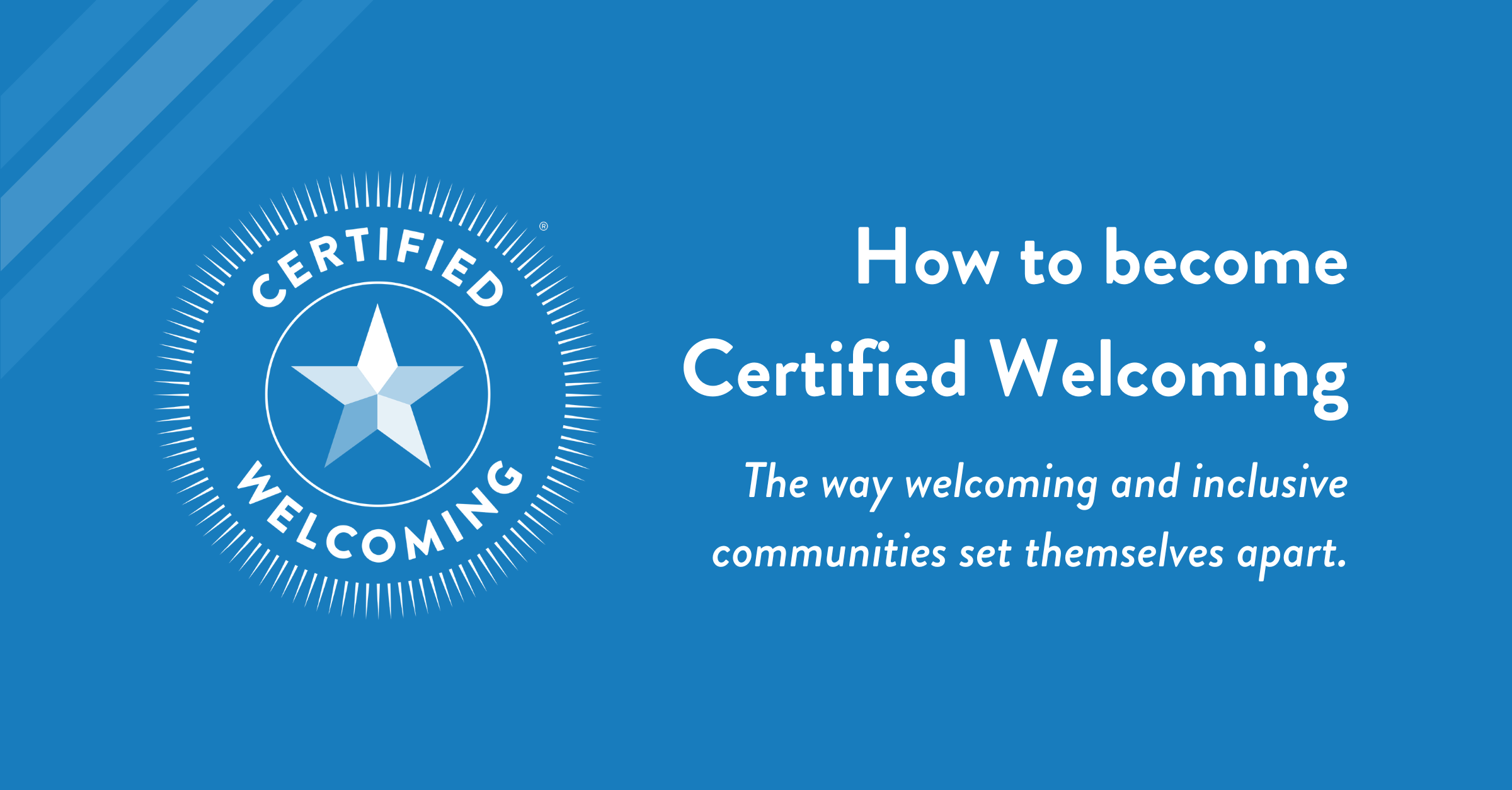
How to become Certified Welcoming
Your top questions about Certified Welcoming answered.
Since 2017, Certified Welcoming has set the highest bar in welcoming work. This designation is reserved for communities whose policies and programs reflect their values and commitment to immigrant inclusion.
In 2023, we relaunched the Certified Welcoming program under the Welcoming Standard 2.0 with new and refreshed criteria. A new star designation system was also announced. These tools can be used to set your welcoming strategy, build deeper partnerships, and gain further commitment to inclusion and belonging in your community.
At a time when immigration is on the minds of community leaders everywhere, programs like Certified Welcoming help strengthen community resilience by building the infrastructure to welcome for the long term.
To help you navigate how to become Certified Welcoming, we answer your most common questions here.
What is Certified Welcoming?
Certified Welcoming is a formal designation for local governments that have created policies and programs reflecting their values and commitment to immigrant inclusion.
The designation demonstrates efforts that the local government and community partners have undertaken to advance diversity, equity, inclusion, and belonging — particularly for immigrants and refugees.
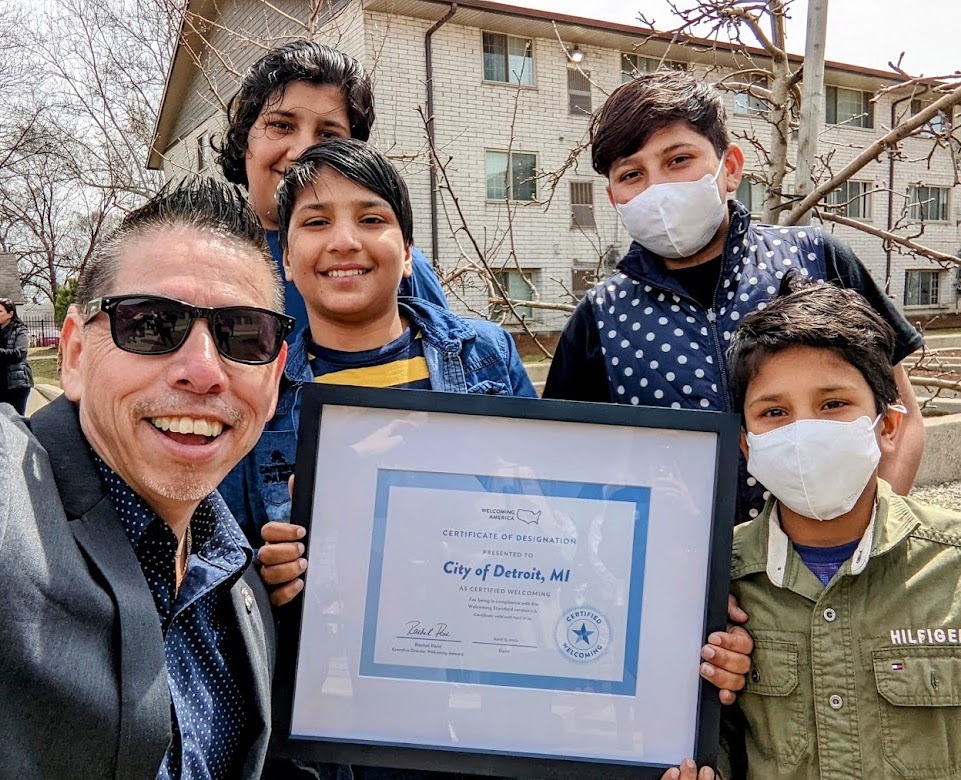
Detroiters display their Certified Welcoming certificate.
How are communities assessed for the designation?
The Welcoming Standard is the backbone of the Certified Welcoming program. It captures the policies, programs, processes, and partnerships at the heart of a welcoming community.
The Welcoming Standard sets the criteria, or benchmarks, that communities need to meet to achieve any of the five Certified Welcoming star designations.
What are the benefits of being Certified Welcoming?
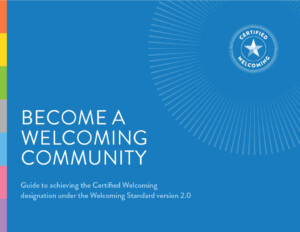
Learn more about the Welcoming Standard and the Certified Welcoming program in our guide.
Becoming Certified Welcoming makes your local government stand out, attracting newcomers and businesses that make your community a more vibrant place to live. In addition to giving your community a competitive advantage, the certification process gives you a comprehensive analysis and detailed report demonstrating your strengths and opportunities for improvement.
Here are a few ways we’ve seen certification provide value:
- Communities can bring new partners to the table and recommit current partners.
- Certification creates continued commitment and accountability to welcoming and immigrant inclusion, particularly during and after changes in locally elected leadership.
- By requiring recertification every four years, Certified Welcoming and its star designations provide the opportunity to visibly demonstrate continued improvement and commitment to the work.
How do the star designations work?
Certified Welcoming allows local governments to seek one of five star designations. Far from a rating system, the star designations ensure local governments have a chance to achieve certification while providing transparency and pathways to advance their work.
Communities seeking to be Certified Welcoming can apply for any star designation they desire. To achieve a Certified Welcoming designation, all criteria in the Welcoming Standard must be met for that star designation and below. For example, if a city were seeking a 3-star certification, it would need to demonstrate compliance with all 1-, 2-, and 3-star criteria.
What is the difference between 1, 2, 3, 4 and 5 stars?
The star designations are intended to build upon each other and become increasingly more difficult. This creates a pathway for communities to deepen their work, gain new partners, and set goals for becoming Certified Welcoming at a higher star designation.
The stars also help to differentiate work among Certified Welcoming places. For example, a 5-star Certified Welcoming place must meet over 100 criteria in the Welcoming Standard and will be more advanced in its welcoming work, whereas a 1-star Certified Welcoming community needs to meet 16 criteria and is likely just getting started.
Who can apply?
The lead applicant for Certified Welcoming must be a local government (i.e. towns, cities, and counties).
However, the designation can only be achieved with the work of a wide array of local organizations and leaders. Local government, nonprofits, and other community leaders are assessed for their contributions to local welcoming work.
How can I apply?
Welcoming America is currently only accepting Certified Welcoming applications through a national cohort program. With two cohorts to choose from, this program will assist you in completing your self-assessment, preparing for an audit, receiving your report, and celebrating your success with support from peers and Welcoming America staff.
The Foundation Cohort is designed for local governments seeking the 1- or 2-star Certified Welcoming designation, and the Leadership Cohort is designed for those seeking the 3-, 4-, or 5-star designation.
If your community is interested, please complete our interest form to be contacted when applications open.
What is the certification process like?
Once you apply, you will complete onboarding and a self-assessment for your selected star designation.
Next, a Certified Welcoming analyst and auditor will review the submitted evidence and schedule an audit. Audits consist of interviews with community leaders, government employees, and cross-sector partners.
After the audit, you will receive a detailed report on our findings that identify local strengths and provide a roadmap for areas of growth. If required, we may request that you submit additional evidence to show your compliance with the Welcoming Standard.
Finally, we encourage you to announce and celebrate your certification with all of the partners who made it possible!
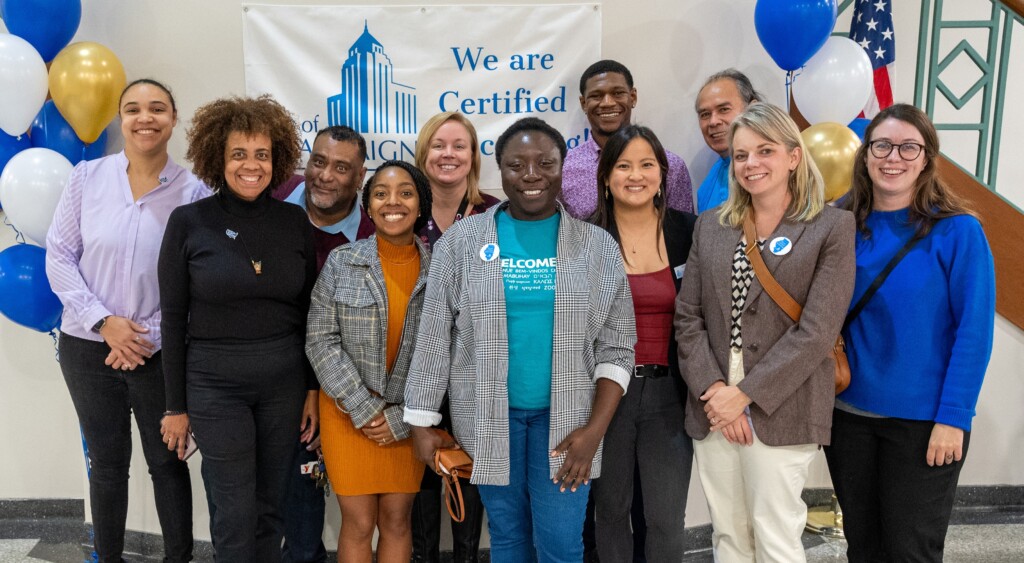
Champaign, Illinois celebrates the city’s Certified Welcoming designation. Photo credit: City of Champaign
Who else has applied for Certified Welcoming?
Certified Welcoming communities are diverse geographically, demographically, and politically. Urban, suburban, and rural communities, Republican and Democrat-led governments, and places experiencing recent demographic change and those with more traditional immigrant gateways have all participated in Certified Welcoming.
See the complete list on our website and read stories about their work and their experience with the certification process on our blog.
What Certified Welcoming communities say:
“Being a Certified Welcoming county affirms that Salt Lake County is committed to working for all residents. It is a rigorous process, but it is really very rewarding.” — Joseph Genda, Salt Lake County, Utah (Certified Welcoming since 2018)
“Philadelphia has worked tirelessly to be a place where people — from all walks of life — feel a sense of belonging. Our greatest strength is our vibrant diversity and that is largely in part due to the tremendous and continuous contributions made by our immigrant communities. This special recognition is not the end of our efforts, but a true testament to the commitment and hard work of city departments and partner organizations.” —Mayor Jim Kenney, City of Philadelphia, Pennsylvania (Certified Welcoming since 2023)
“This certification puts us in line with other cities across the country. We’re able to see what we’re doing that is great and also things that we need to work on. It’s aligned with all our initiatives to make Tulsa a world-class city.” — Krystal Reyes, City of Tulsa, Oklahoma (Certified Welcoming since 2023)
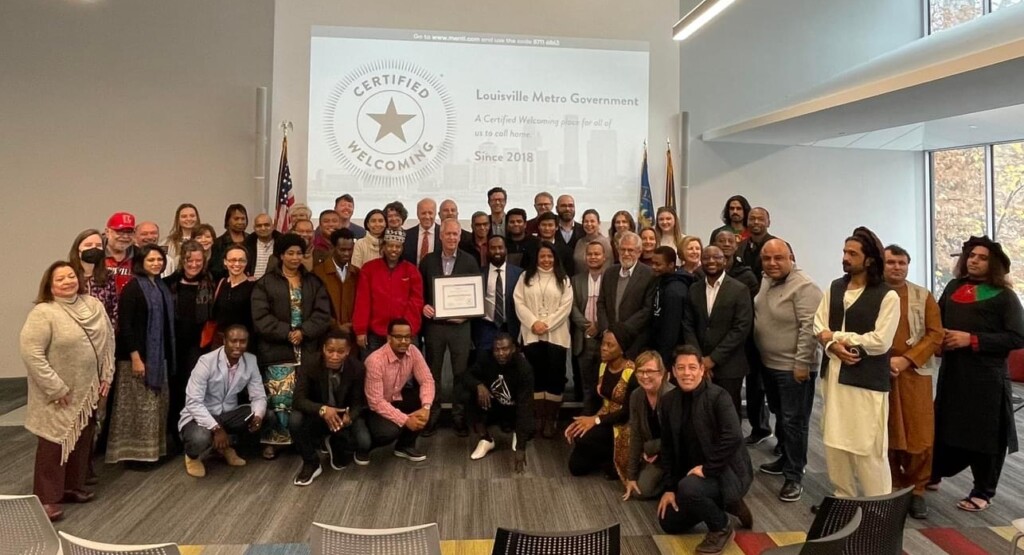
Certified Welcoming celebration in Louisville, Kentucky. Photo credit: Louisville Metro Government
I’m ready! What’s next?
If you’re interested in becoming Certified Welcoming, but aren’t sure which star designation is right for your local government, take this pre-assessment! You will receive a recommendation on which star designation is the best fit for your community.
See more answers to your frequently asked questions on our FAQs page.